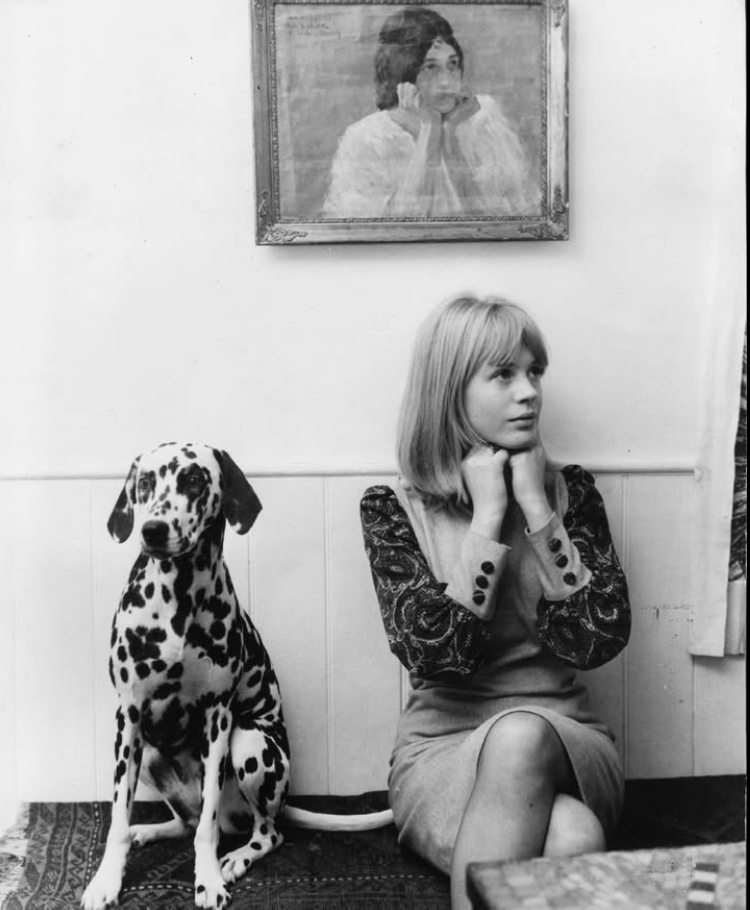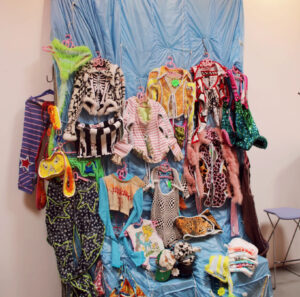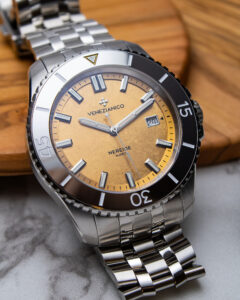Marianne Faithfull was more than just a singer, actress, and muse—she was a symbol of 1960s London, a woman whose impeccable style and effortlessly cool demeanor made her one of the most influential figures of the era. With her recent passing at the age of 78, the world not only mourns the loss of a brilliant artist but also of a fashion icon whose impression stretched far beyond music and film. Faithfull’s wardrobe, a reflection of her bohemian yet refined aesthetic, remains a cornerstone of the Swinging Sixties style, an era that revolutionized fashion and youth culture.
From her early days as a fresh-faced ingénue to her later transformation into a rock ‘n’ roll survivor with a darker, more androgynous aesthetic, Faithfull’s fashion sense evolved in tandem with her life experiences. She embodied the carefree yet sophisticated look that defined London’s creative scene, moving seamlessly between mod mini-dresses, luxurious fur coats, and slinky bohemian silhouettes. This is a deep dive into her wardrobe, her style evolution, and the enduring impact of her sartorial choices.
Early Years: The Rise of a Fashion Muse
Marianne Faithfull’s journey into the public eye began in 1964 when she was discovered by Rolling Stones’ manager Andrew Loog Oldham at a party. Almost overnight, she was transformed from a convent schoolgirl into a pop sensation, recording her first hit, As Tears Go By, which was written for her by Mick Jagger and Keith Richards.
In these early years, Faithfull was the epitome of English rose beauty. With her long, golden hair, delicate features, and willowy frame, she perfectly fit the mold of the swinging sixties ingénue. Her style was simple yet striking—think A-line mini-dresses, pastel hues, Peter Pan collars, and knee-high boots. Like fellow 1960s icons Jane Birkin and Twiggy, she embraced the youthful, doll-like aesthetic that was popular at the time.
Faithfull’s look was fresh and innocent but with a certain air of mystery. Unlike many of her contemporaries who favored bright, psychedelic patterns, she often leaned toward muted tones, textured fabrics, and classic tailoring. Whether in a shift dress or a simple turtleneck sweater paired with a miniskirt, she exuded a quiet confidence that made her stand out.
Her relationship with Mick Jagger, which began in 1966, catapulted her further into the fashion stratosphere. As one half of the most glamorous couple of the decade, she embraced a more sophisticated, rock-infused wardrobe, often borrowing elements from Jagger’s own flamboyant style.
Swinging London’s Fashion Darling
By the late 1960s, Marianne Faithfull had cemented herself as a fashion icon. Her wardrobe evolved to match the cultural shift that was sweeping through London. The mod aesthetic of the mid-60s gave way to a more decadent and bohemian sensibility, and Faithfull was at the forefront of this transition.
She became known for her love of rich textures and dramatic silhouettes—suede jackets, bell-sleeved dresses, and velvet trousers were staples of her wardrobe. Fur coats, often draped over miniskirts or lace-trimmed blouses, became one of her signature looks. Whether she was stepping out in a sleek black leather ensemble or a flowing maxi dress with knee-high boots, she always carried an air of effortless chic.
One of the most memorable elements of Faithfull’s wardrobe was her ability to mix masculine and feminine elements. She frequently wore tailored suits, borrowing from Jagger’s wardrobe and embracing the androgynous style that was emerging in the late 60s. Yet, she balanced this with soft, romantic details—sheer fabrics, delicate lace, and intricate embroidery. This combination of sharp tailoring and ethereal touches set her apart from her peers.
During this period, Faithfull also became a muse for some of the greatest designers of the time. Ossie Clark and Celia Birtwell, who defined the free-spirited elegance of the late 60s and early 70s, were among her favorites. She also had a close association with designer Thea Porter, whose luxurious bohemian designs aligned perfectly with Faithfull’s aesthetic.
The Girl on a Motorcycle: A Defining Fashion Moment
One of Faithfull’s most iconic fashion moments came in 1968 with her role in The Girl on a Motorcycle, a film directed by Jack Cardiff. The film was controversial for its time, not only for its erotic themes but also for Faithfull’s striking wardrobe.
The most unforgettable image from the film is Faithfull clad in a sleek, black leather catsuit—a look that cemented her status as a daring fashion icon. This ensemble, with its form-fitting silhouette and rebellious attitude, was groundbreaking. It challenged traditional notions of femininity and reinforced Faithfull’s image as both a sex symbol and a boundary-pushing artist.
The catsuit remains one of the most referenced looks in cinematic and fashion history, inspiring countless designers and musicians in the decades that followed. It embodied the fearless spirit of the late 60s and solidified Faithfull’s place in the pantheon of style icons.
The Darker Years: Reinvention Through Fashion
The 1970s marked a turbulent period for Marianne Faithfull. Struggling with addiction and personal turmoil, she disappeared from the mainstream for several years. During this time, her fashion sense evolved dramatically. Gone were the girlish dresses and polished mod looks—her style became darker, more layered, and reflective of her personal struggles.
She often wore oversized coats, scarves, and tattered denim, creating a look that was effortlessly cool yet tinged with melancholy. Her androgynous phase deepened, with Faithfull frequently seen in masculine jackets, baggy trousers, and rock ‘n’ roll staples like leather and distressed fabrics. She no longer played the role of the ethereal 60s muse but instead embraced a raw, lived-in aesthetic that would later influence the punk movement.
Despite her personal battles, Faithfull remained a style icon. Her ability to transform her image—while staying authentic to herself—was a testament to her influence. She was no longer just a model of Swinging London glamour; she had become a symbol of resilience and artistic reinvention.
Later Years: Timeless Elegance and Rock ‘n’ Roll Edge
In the 1980s and beyond, as Faithfull staged one of the most remarkable career comebacks in music history, her style continued to evolve. With the release of Broken English in 1979, she re-emerged with a gravelly voice and a newfound sense of self. Her wardrobe reflected this transformation—she now favored sleek, tailored pieces with a rock ‘n’ roll edge.
Her later style was a mix of classic and avant-garde. She often wore sharp-shouldered blazers, long coats, and layered jewelry. Designers such as Jean Paul Gaultier, Vivienne Westwood, and Alexander McQueen celebrated her unique blend of elegance and rebellion, often dressing her for performances and public appearances.
Even in her later years, Faithfull never lost her distinctive touch. Whether in a well-tailored suit or a flowing, gothic-inspired gown, she remained effortlessly stylish, proving that true fashion icons never fade—they simply evolve.
Legacy: The Eternal Influence of Marianne Faithfull’s Style
Marianne Faithfull’s impression on fashion is immeasurable. She was not just a passive participant in the Swinging Sixties—she actively shaped the aesthetic of the era. Her wardrobe, from mod miniskirts to bohemian maxis to androgynous tailoring, encapsulated the spirit of each phase of her life.
Her influence can still be seen today. Modern designers frequently reference her looks, and contemporary artists, from Florence Welch to Kate Moss, have drawn inspiration from her effortless cool. The combination of elegance and rebellion that she embodied remains a blueprint for rock ‘n’ roll style.
With her passing, the world loses not only a legendary musician but also one of fashion’s great muses. Yet, her style—like her music—will live on, continuing to inspire generations to come.
Marianne Faithfull was more than just a fashion icon; she was a living, breathing testament to the power of reinvention. Through every triumph and every challenge, her wardrobe told the story of a life fully lived—one that will never be forgotten.
No comments yet.








